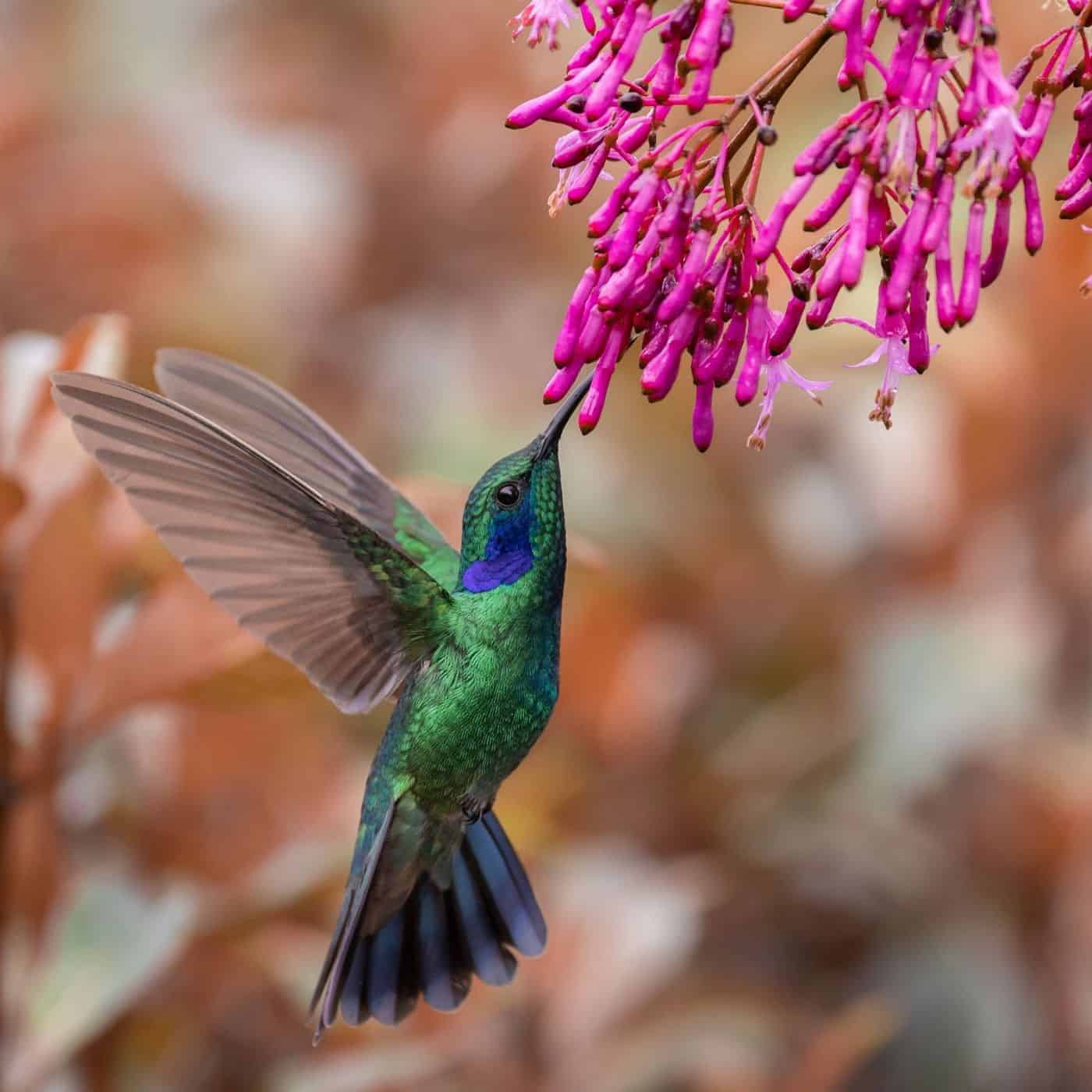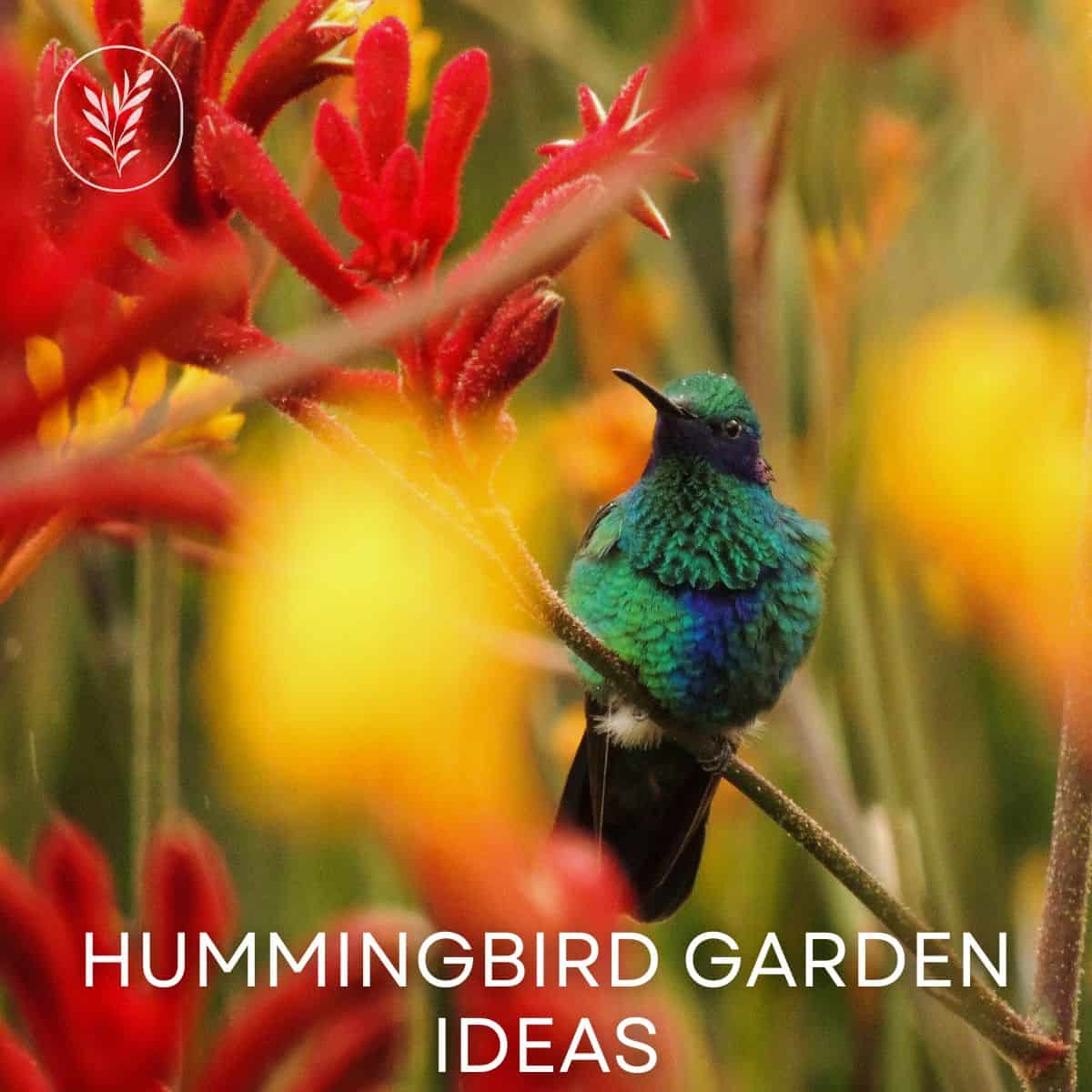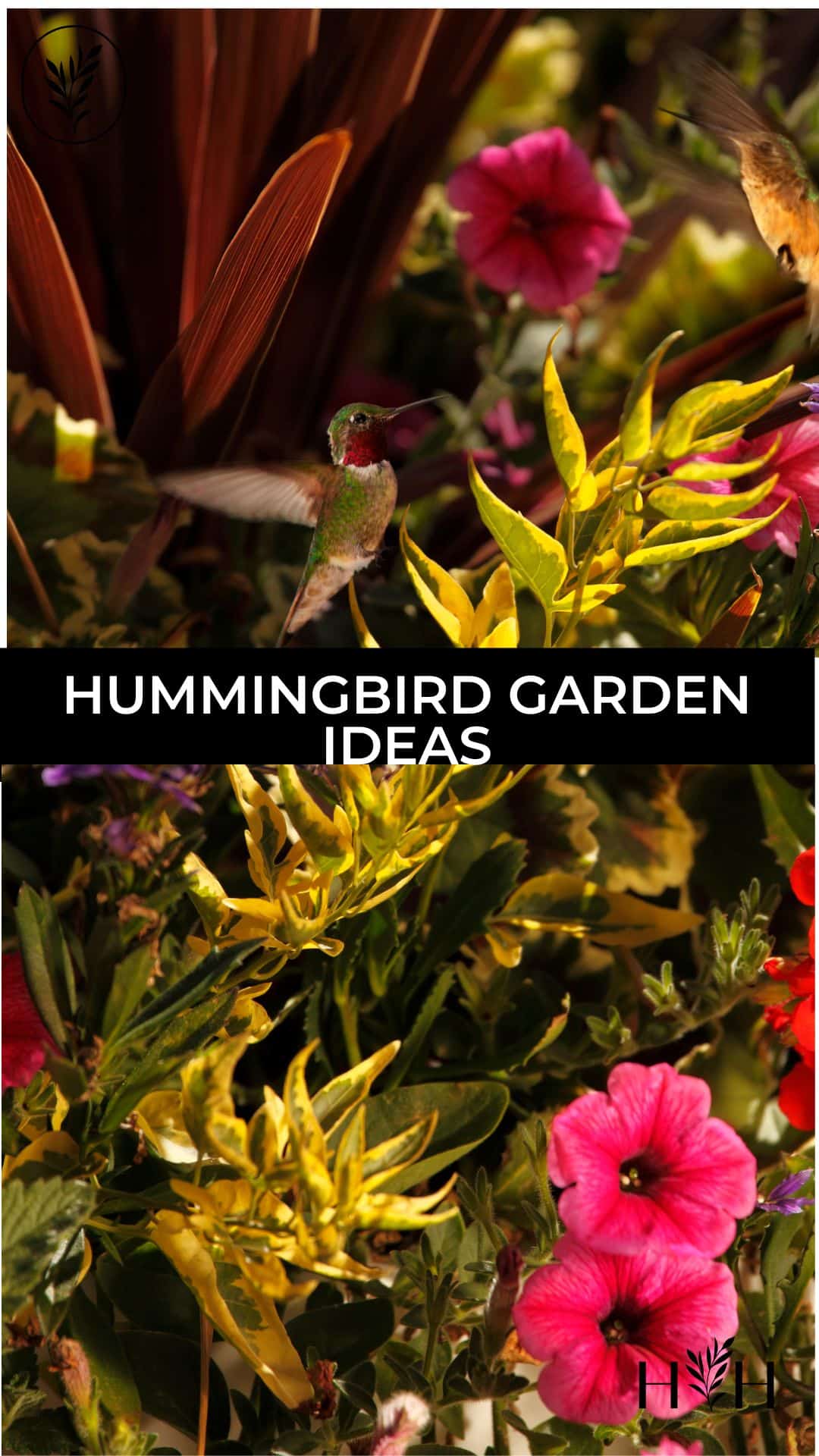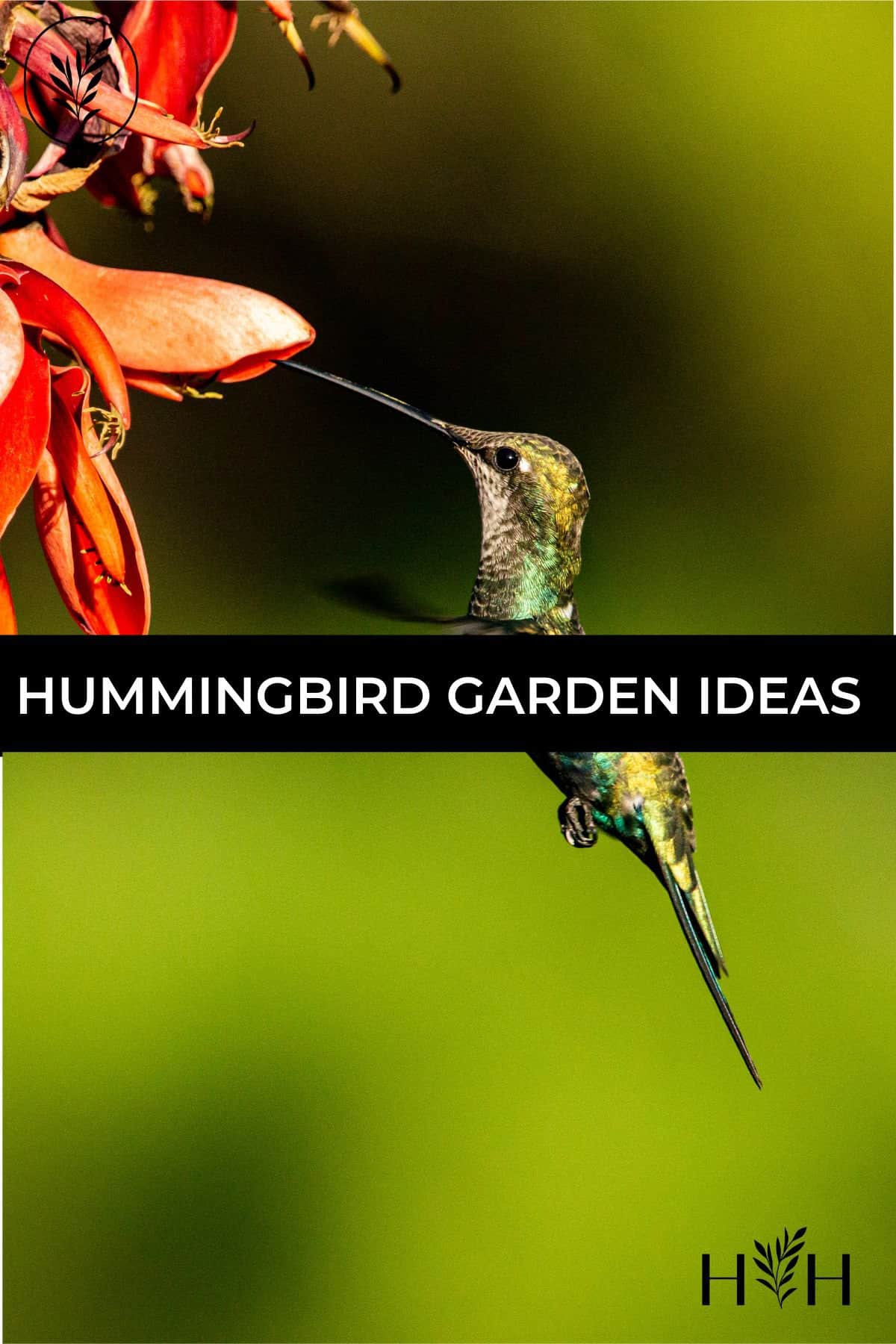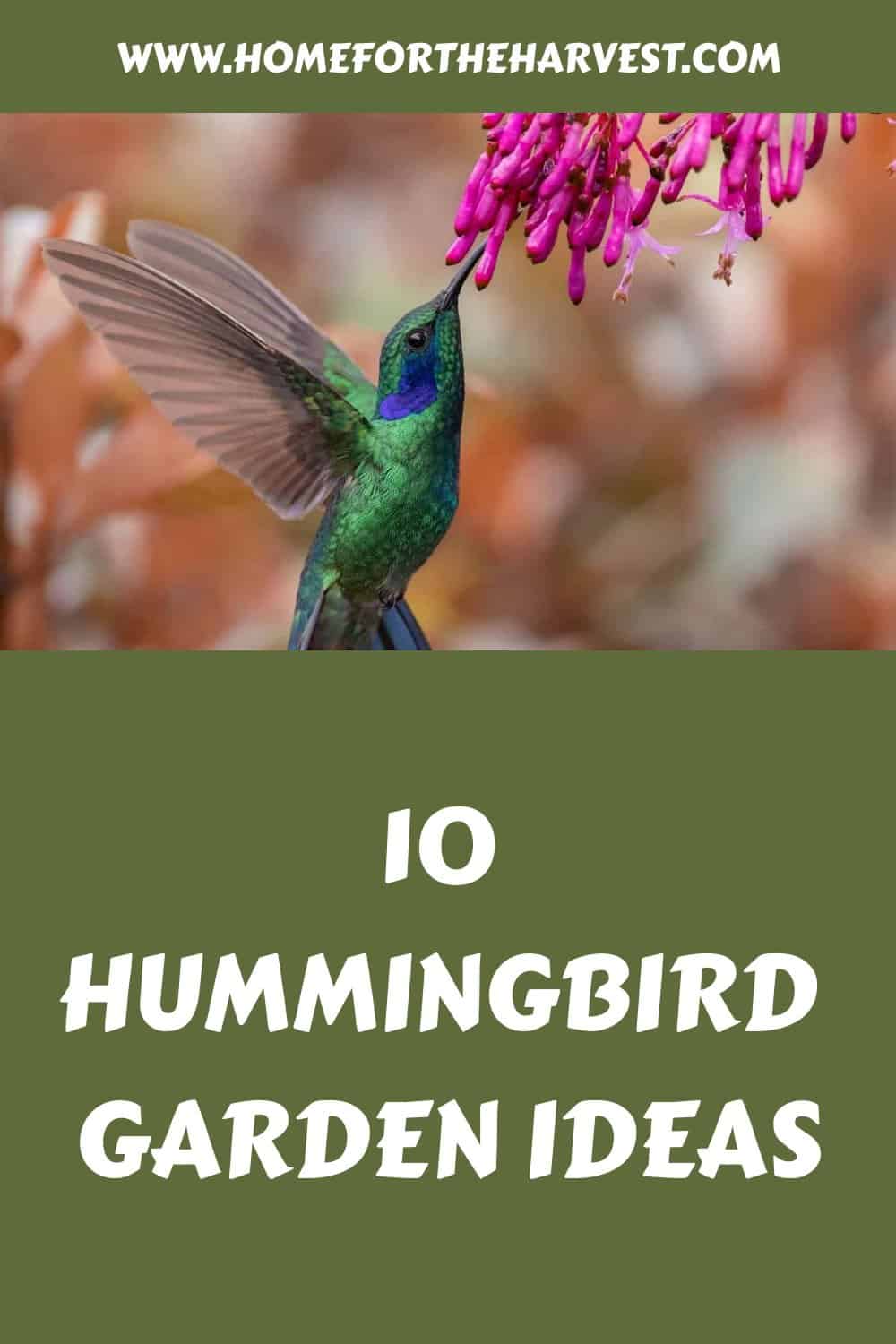If you’re looking for the best way to increase the number of hummingbirds in your garden, there are at least 10 easy things you can do as a way to invite them to visit in early spring and summer. With so many hummingbird garden ideas available, your garden will be buzzing!
1. Plant hummingbird flowers
A great way to attract pollinators such as hummingbirds will be much easier if you have a garden of hummingbird flowers that attract them.
Hummingbirds are highly attracted to bright flowers that are tubular shape. You really want to focus on including red and pink flowers, since those tend to do very well with the hummingbirds.
Here are several long tubular flowers to consider in your hummingbird garden:
- Penstemon
- Catmint
- Agastache
- Trumpet honeysuckle
- Salvia
- Flowering tobacco
- Trumpet creeper or trumpet vine
- Bee balm
Trumpet honeysuckle and bee balm are fan favorites.
These are some of the hummingbird’s favorite flowers and will add more color to your beautiful flower bed and more chances for attracting hummingbirds!
Choose flowers you enjoy mixed in with some above, and you’ll attract butterflies as well.
There are several more attractive flowers and aromatic foliage you can plant as well and here’s an article on some great, colorful flowers to begin with on your research.
2. Make your own hummingbird nectar
Not quite sure what to put in your hummingbird feeders?
You can easily make your own hummingbird nectar with just two simple ingredients: water and refined white sugar. Couldn’t be more simple right?
- Mix one cup of sugar with four cups of water.
- Despite what some sites might tell you, do not use red dye to color the water.
- Place sugar water solution into your hummingbird feeder and wait for your visitors.
- You’ll want to change this water every couple of days and ensure you clean your feeder weekly to ensure mold does not grow!
Now you know the most simple and efficient approach to making your own hummingbird nectar. These are likely ingredients you already have around your house as well! Visiting hummingbirds will be so thankful.
Still have any questions? No worries, we’ve got this handy guide on all the important details on feeding hummingbirds!
3. Add window hummingbird feeders
As you’re learning, providing easy access to food sources is key to attracting hummingbirds.
If you’re not familiar, a window hummingbird feeder comes in various shapes and sizes but they all consist of a section cup or two that you can place on your window. Many opt for these bird feeders so that they might have a better chance of viewing hummingbirds when they stop by.
There is one catch.
You will want to purchase the window boxes that are closely attached to the window and not those that offer a hook to hang a feeder. Having a window feeder that is closer to the glass will better prevent birds and hummingbirds from crashing into the window.
This is a great alternative to a hummingbird flower garden if you don’t have time to manage hummingbird plants or have narrow gardens.
4. Make a hummingbird bath
While some might opt for a statement piece for their hummingbird bath, you do not need anything fancy to attract hummingbirds.
Making your own option can be more satisfying and will be less worrisome for you if something happens to it. If something does happen to it, you will know it’s easy to make and replace if need be!
- To make your hummingbird bath, you must ensure you solely use shallow water. It needs to be shallow enough to barely contain a centimeter of water. Tiny birds like hummingbirds will not bathe and play in deeper water like larger birds.
- Hummingbirds do not like stagnant water. Many people like to have working fountains in their gardens or yards to keep the water moving.
- Hummingbirds are fond of wet rocks because they easily grip and help clean their wings. So ensure you have them nearby to accommodate your little birds.
- Consider making a DIY Rock Fountain! All you will need is three items: a bowl, rocks, and a submersible pump! The pump should go in the center of your bowl, and the rocks can go around it. Add enough water to cover the pump except for the top. Some rocks need to be above the waterline to be most beneficial. Then place where desired and enjoy!
These are lovely additions to hummingbird gardens as they provide more for the little birds to enjoy when they visit.
5. Add a hummingbird swing to your hummingbird garden
If you’ve never heard of or seen a hummingbird swing, it is like a bird swing you might see in birdcages (if not thinner). They are super simplistic, and you can likely make your own if you want to.
Ensure you hang them in full sun near your flowering plants and/or bird feeders.
Don’t be concerned if they don’t use your new swing immediately. Give them time to warm up to it before they begin to use it. It could take some time to attract hummingbirds.
Admiring bird watchers will see their hummingbird friends if they just have a little patience!
6. Plant a hummingbird arch with flowers
A hummingbird arch can be as big as a full-size arbor arch or as small as a decorative wreath. Just be sure to decorate said arch with nectar-rich flowers!
There are climbing plants that hummingbirds love such as the cypress vine, cardinal climber, or trumpet vine.
Cypress is best if you live in a colder climate, but you can also grow cardinal climber from seed indoors and transplant out after the last frost.
These will be perfect for growing up on any trellis. Not only will it be visually appealing for your visiting hummingbird friends but for everyone who visits your hummingbird garden as well!
7. Plant flowers that are easy to grow in pots or hanging baskets
If you’re a fan of hanging plants, you’re in luck! There are plenty that will attract hummingbirds to your garden. You can start by researching the following best plants to see which you prefer:
- Fuchsias
- Petunias
- Geraniums
- Nasturtiums
- Impatiens
- Lantana
Luckily, you’re not limited to these options as there are more you can choose from. Coral bells, verbena, and salvia are also excellent choices to consider!
8. Plant trees, shrubs, and vines that produce berries.
Given that hummingbirds love a water and sugar solution, it should be no surprise they love the naturally sweet juice that berries provide. Keeping plants that produce berries around can also help attract hummingbirds.
You might consider peaches, red fruits, or those with pink shades as these bright colors are highly attractive to hummingbirds. Brightly colored fruits like red berries will bring hummingbirds from all over.
9. Planting native plants
Researching and planting specifically native plants in your hummingbird garden will be easier to manage and a treat for all of your local pollinators. Hummingbirds will favor these plants, especially ones with large leaves, to lay their eggs and provide nourishment for their larvae.
10. Provide nesting material
Hummingbirds generally use moss, feathers, spider silk, lichen, and bits of plants to nest—however, there are items you can add to their repertoire by keeping them around to help their nest-building ventures!
- Cotton balls – They love pulling small pieces off of the cotton ball to help build their nest
- Dead leaves and twigs – Keep a collection of dead leaves and twigs for hummingbirds to have easy access to
- String or thread – You likely already have this around your house (yarn works too)
- Grass clippings – You can leave out dead grass or regular grass bits after mowing
You may even want to add some sweet birdhouses to encourage hummingbirds to stick around. Provide feeders filled with things hummingbirds will enjoy too.
11. Say no to poisons and pesticides
You should make sure the birds are sheltered from predators when they cannot be seen in their natural habitat. To protect hummingbirds from hummingbird diseases, avoid the use of toxic chemical substances or pesticides.
Remember, everything you put inside your garden will go into producing the flower nectar your birds need. Take into consideration these things while choosing garden maintenance.
The American Bird Conservancy article provides information on how pesticides and poisonous chemicals affect the bird population.
For best results, pair these ideas together for your ideal hummingbird garden, and you are sure to see hummingbirds within due time.
However, it’s important to be patient as your hummingbird garden plans come to life. It might take time for them to learn where your feeding sources are and then to go back and tell all their friends!
In the meantime, enjoy your sunny garden and the colorful, nectar-rich blooms, that will soon attract plenty of nesting hummingbirds.


